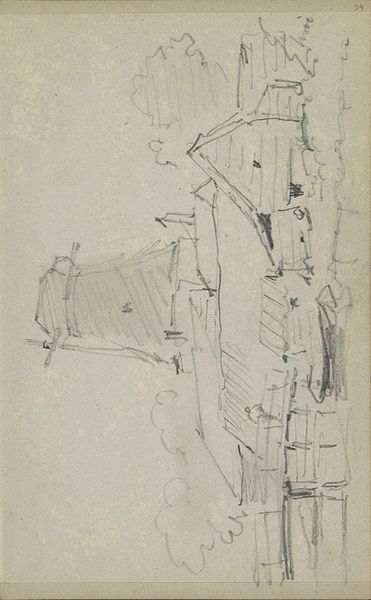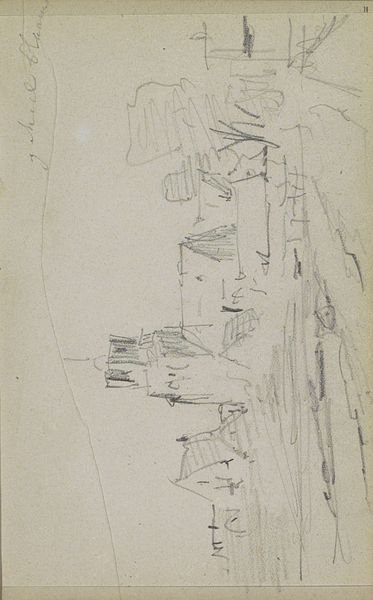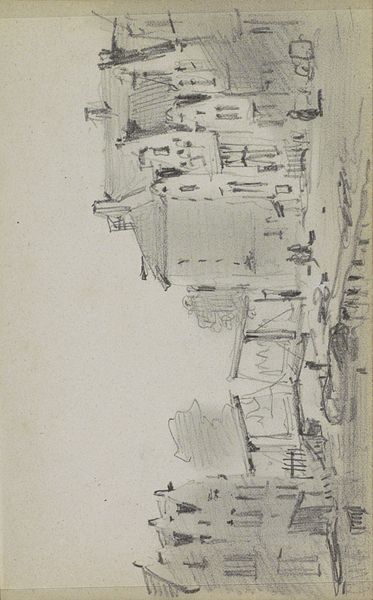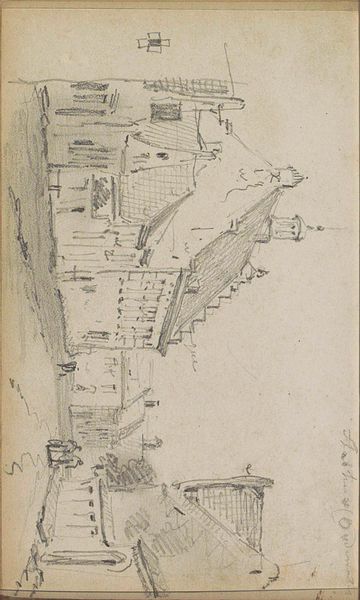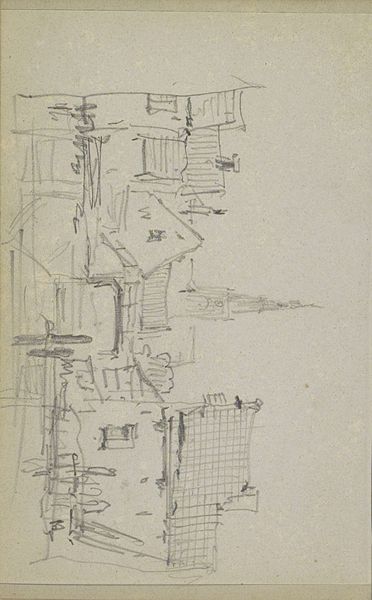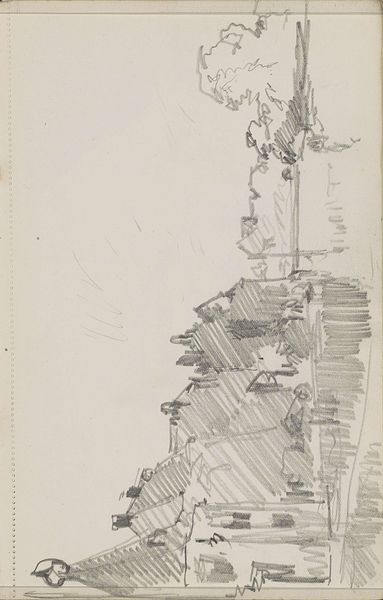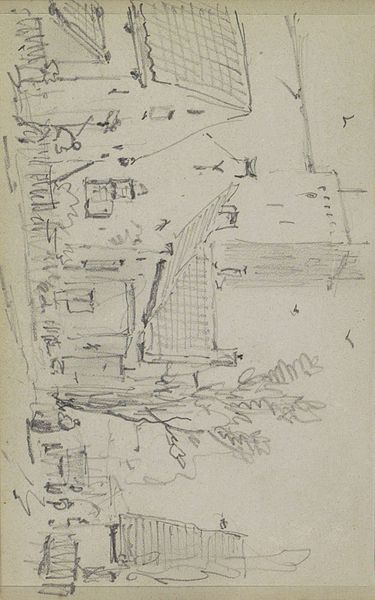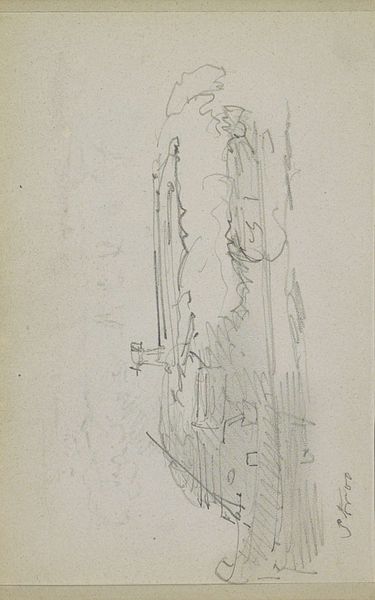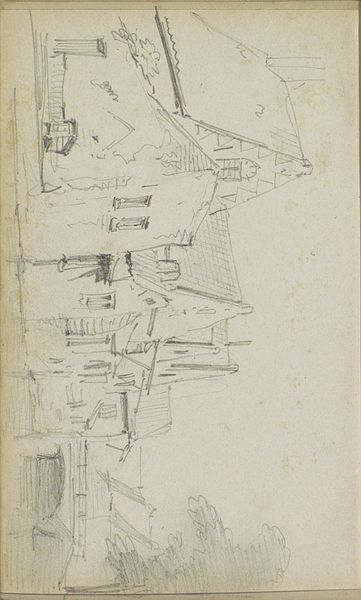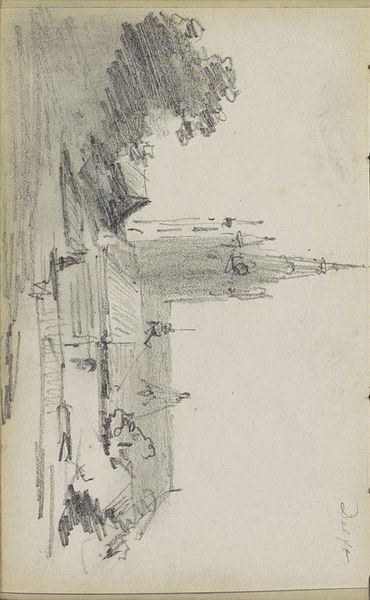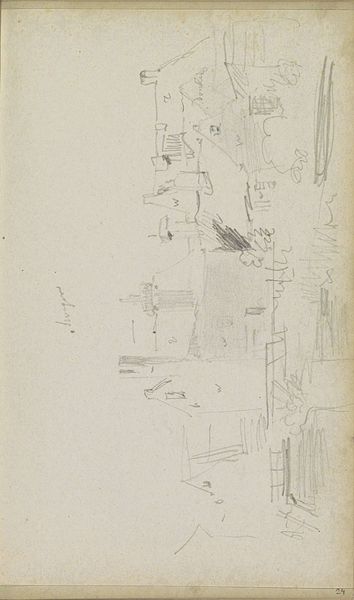
drawing, pencil
#
drawing
#
landscape
#
pencil
Copyright: Rijks Museum: Open Domain
Editor: Here we have "Stadsgezicht met een molen," or "Cityscape with a Mill," a pencil drawing by Adrianus Eversen, likely created sometime between 1828 and 1897. It's quite a delicate sketch. The lines are very light, giving it an airy feeling. What compositional elements stand out to you in this piece? Curator: The most striking aspect is certainly Eversen’s command of line. Note how varied the strokes are: short, quick dashes to suggest texture, longer, more deliberate lines to define the architecture. It’s a network of marks on the page. How do you interpret the relationships of the different weights and lengths of the markmaking on the page? Editor: I notice the thicker, darker lines outline the windmill, drawing my eye to it immediately. The lighter strokes around it create a sense of depth and distance, making the windmill the focal point. Curator: Precisely. This deliberate contrast, achieved solely through variations in pencil pressure, structures our perception. And it allows a glimpse of the whole. Consider how the geometric forms are used in contrast as well. Do you see how the hard lines and forms on the left side mimic the forms of the mill itself? Editor: That's fascinating. The hard angles of the architecture lead my eye up to the windmill sails. But I must admit, some sections are so lightly drawn, they are difficult to decipher. Was that typical for sketches of this time, to leave much to the viewer’s interpretation? Curator: While not unusual for preparatory studies, I suggest Eversen utilizes a system of signs to make us reconstruct this cityscape. He prioritizes an architecture of interlocking and distinct strokes which coalesce to create this composition. It is through analyzing these separate graphic modules that we can appreciate this landscape view. It also allows you to come to the question: does the work feel finished or unfinished to you? Editor: That's a good question, the work has elements of both the unfinished and the fully complete. Seeing it broken down to distinct parts and its wholeness is a fascinating perspective. Thank you! Curator: And thank you. I learned by thinking it through with you.
Comments
No comments
Be the first to comment and join the conversation on the ultimate creative platform.
